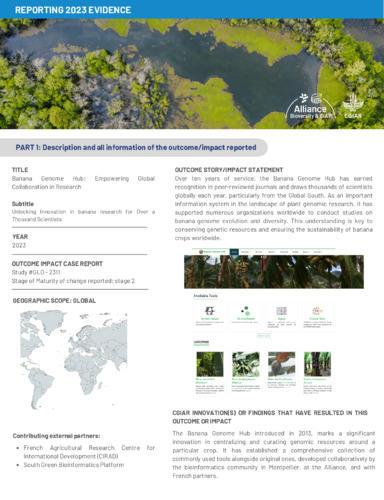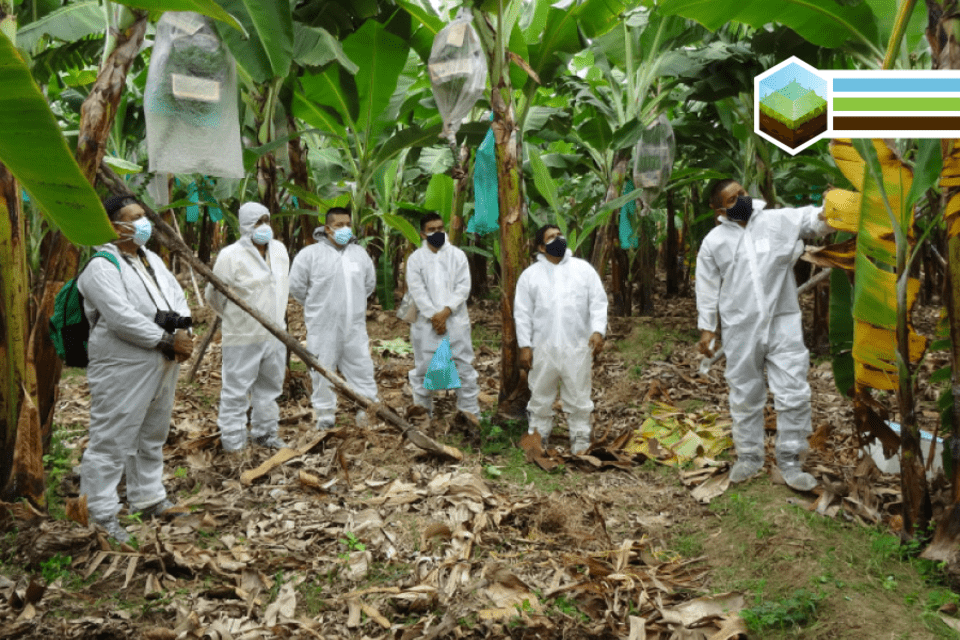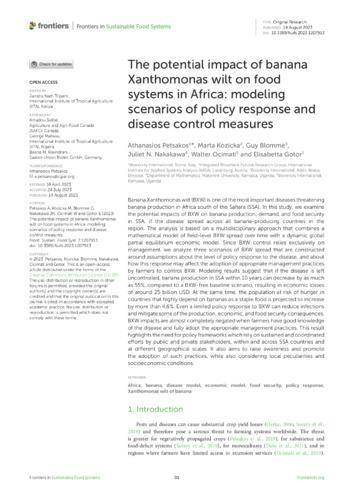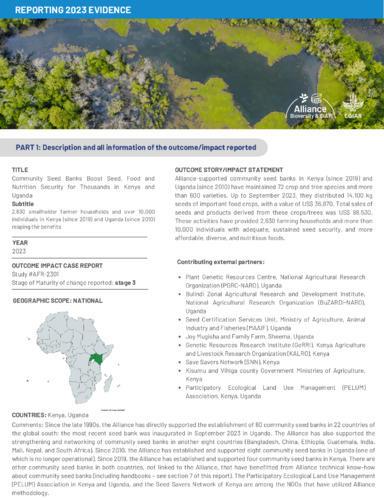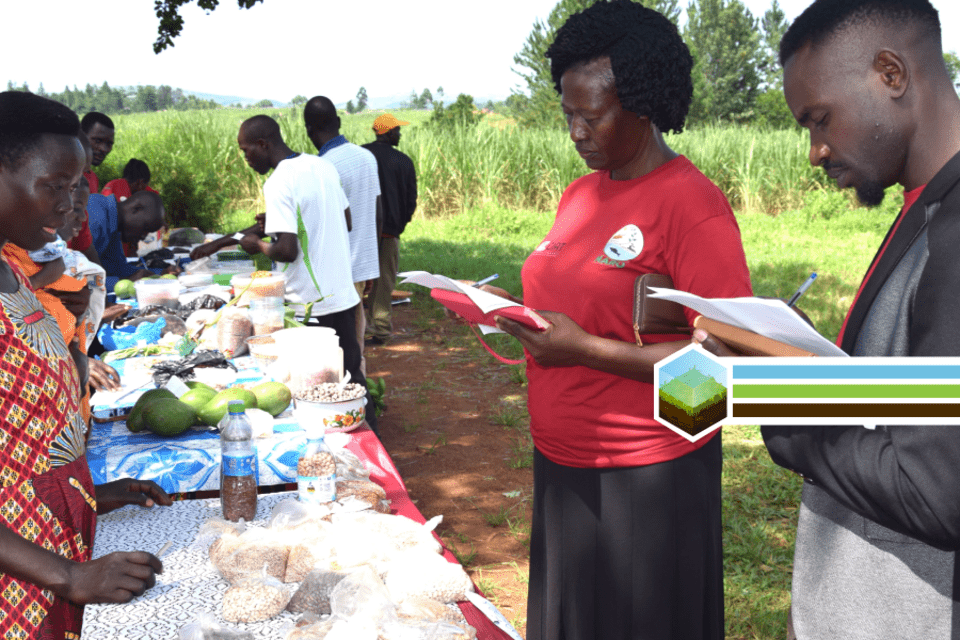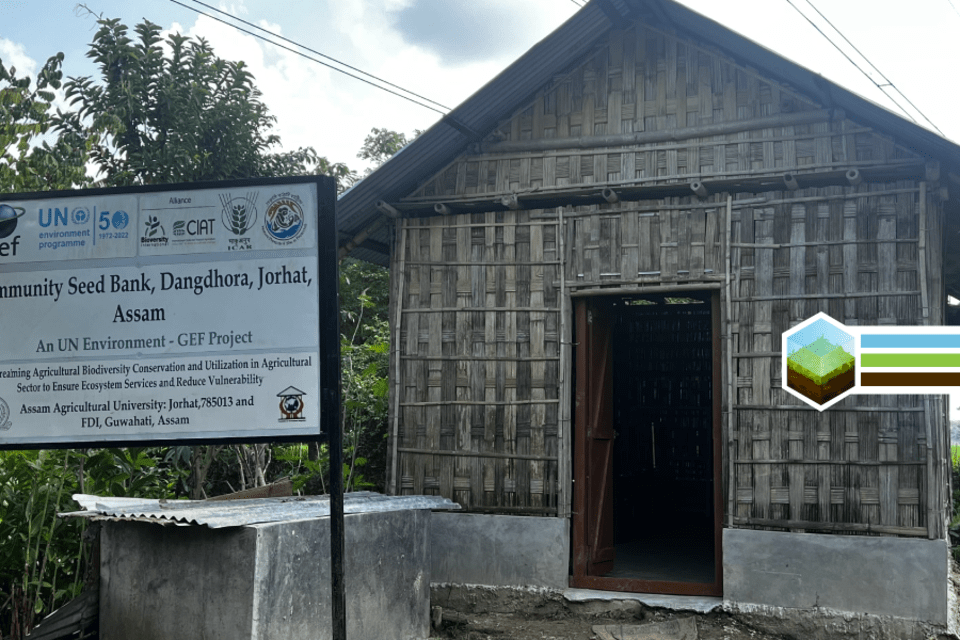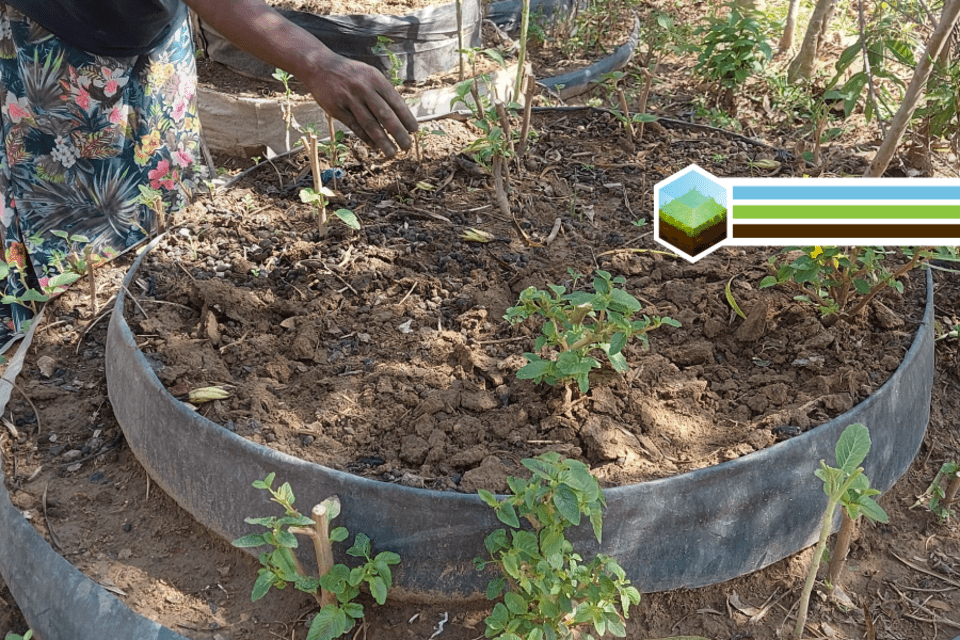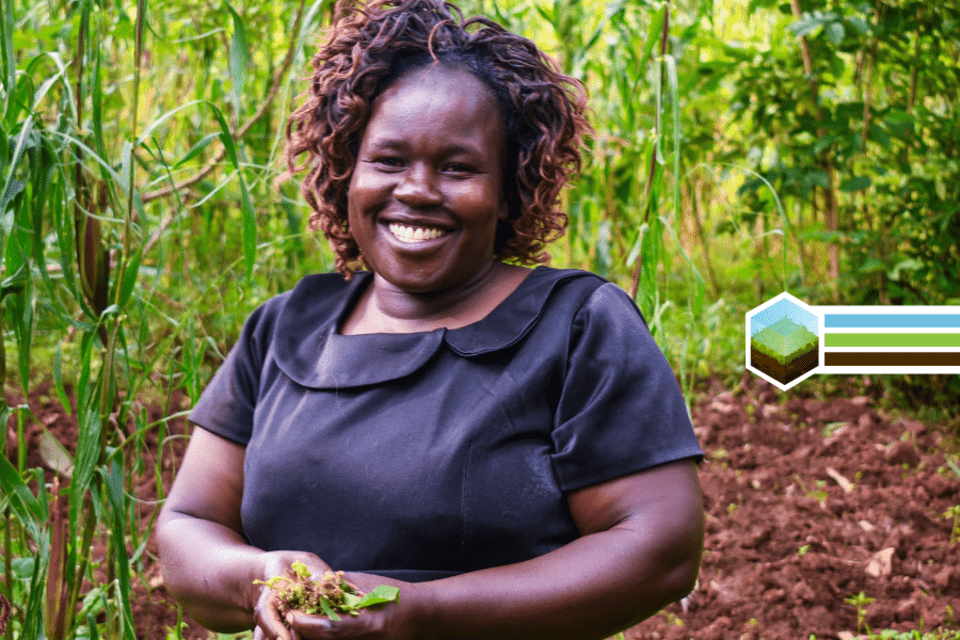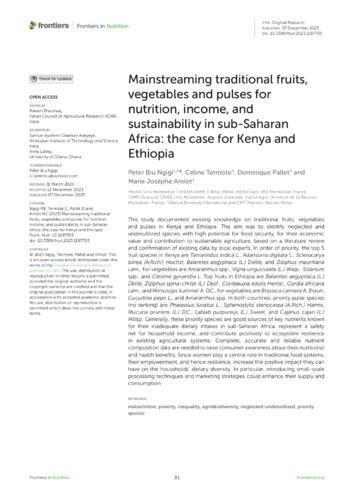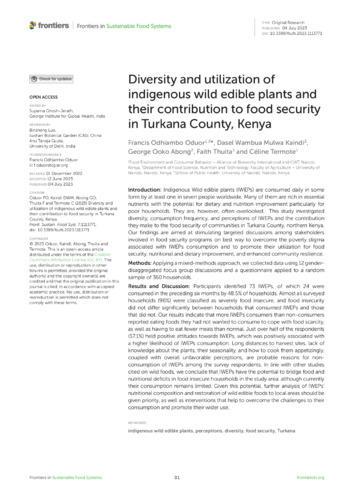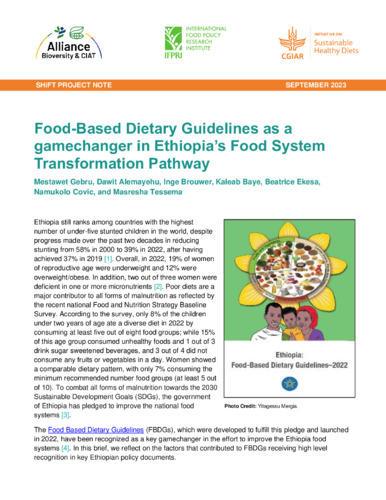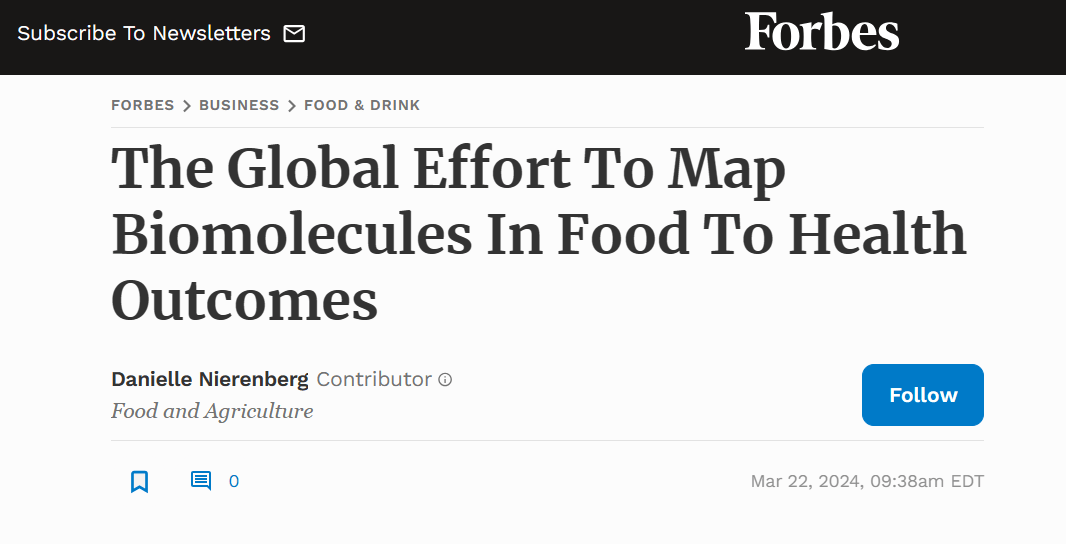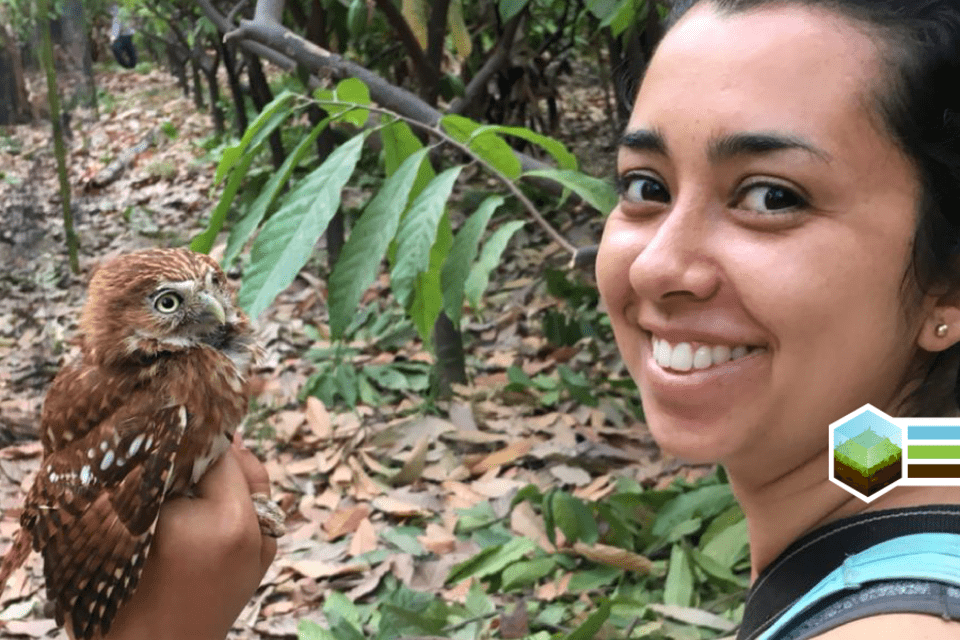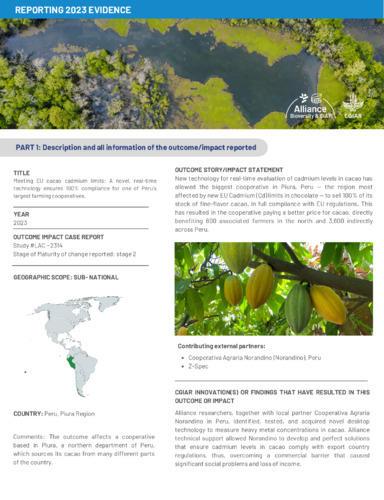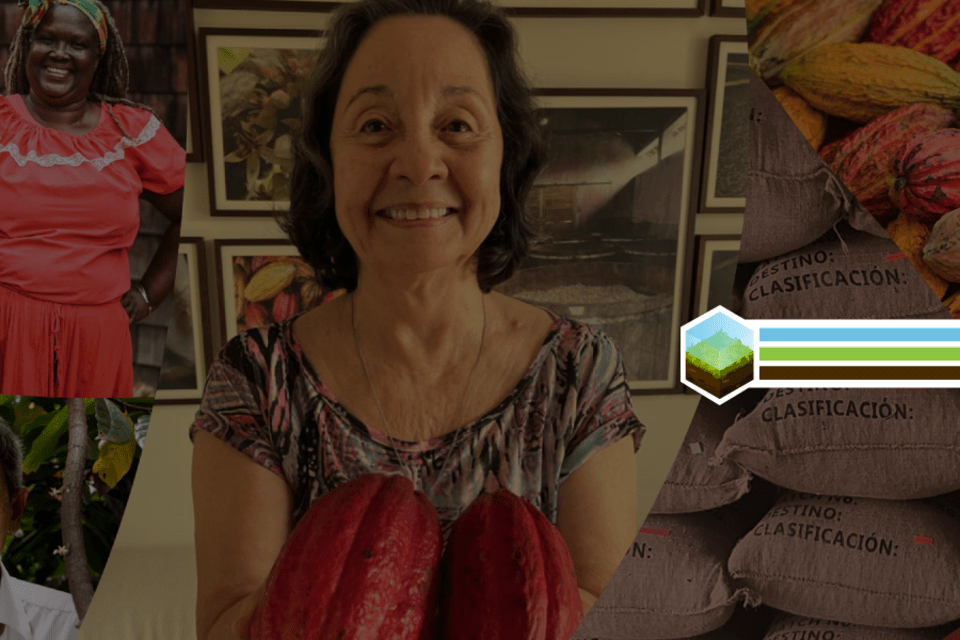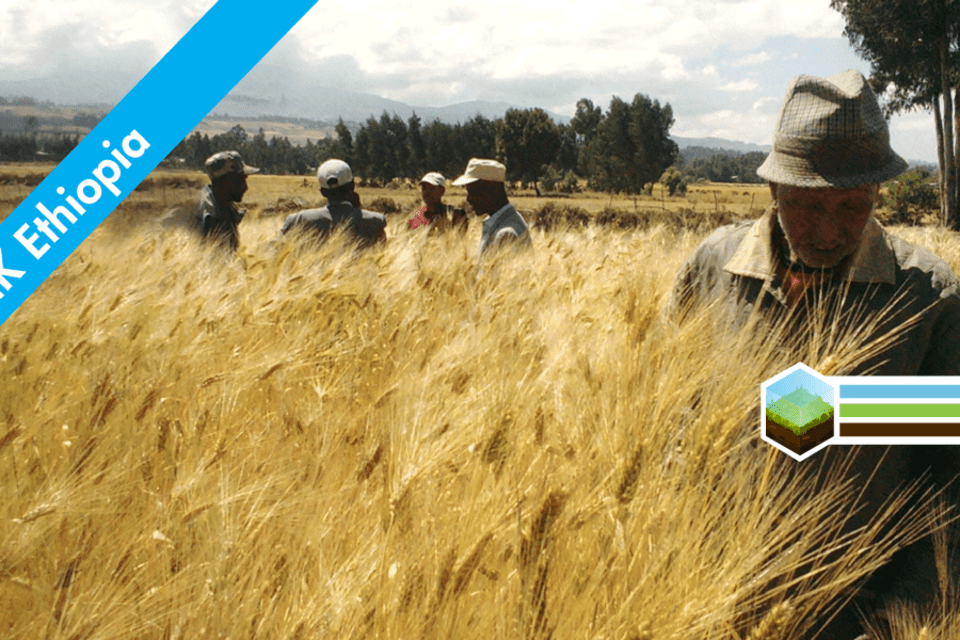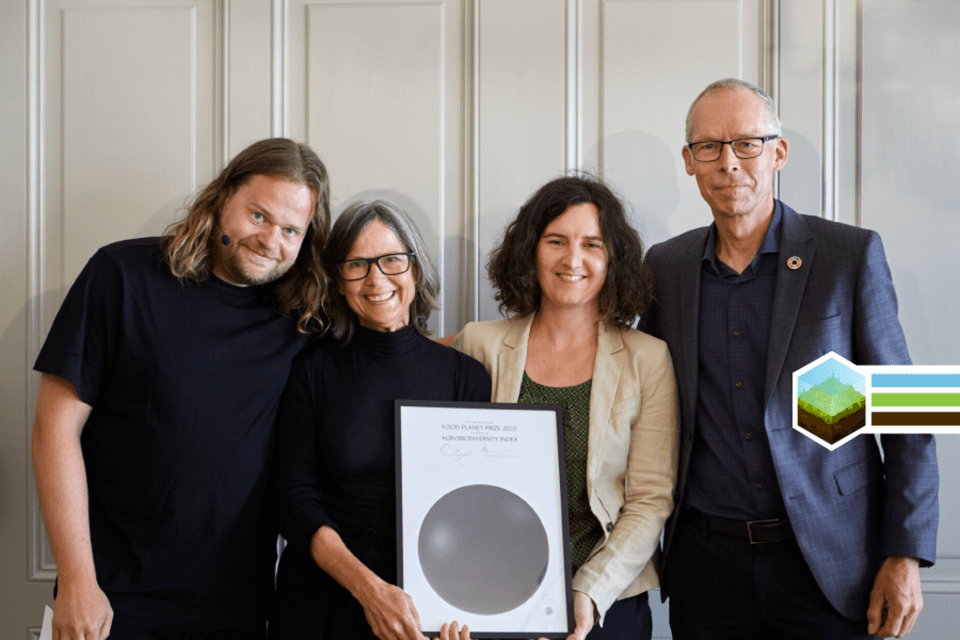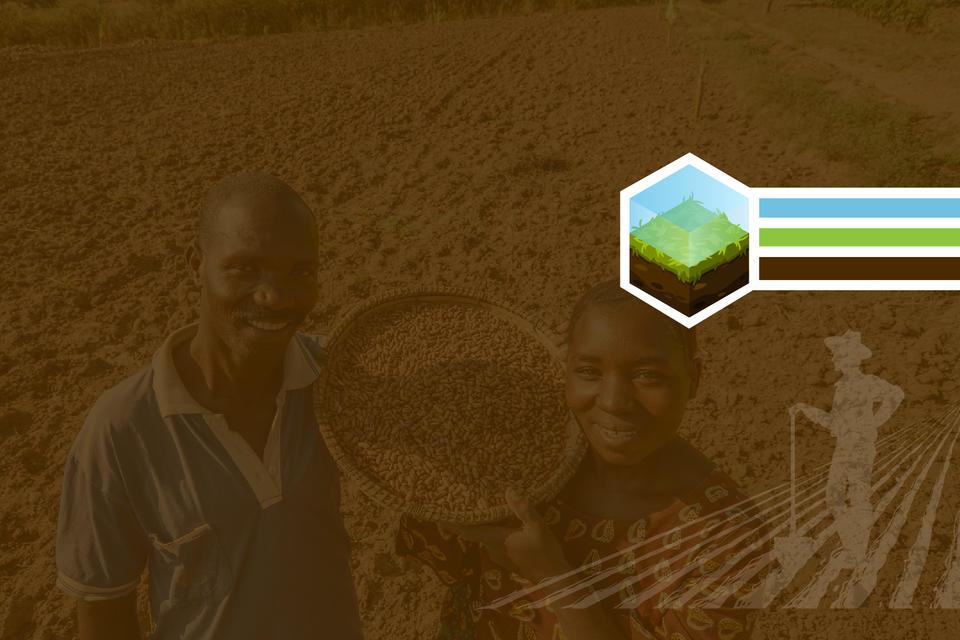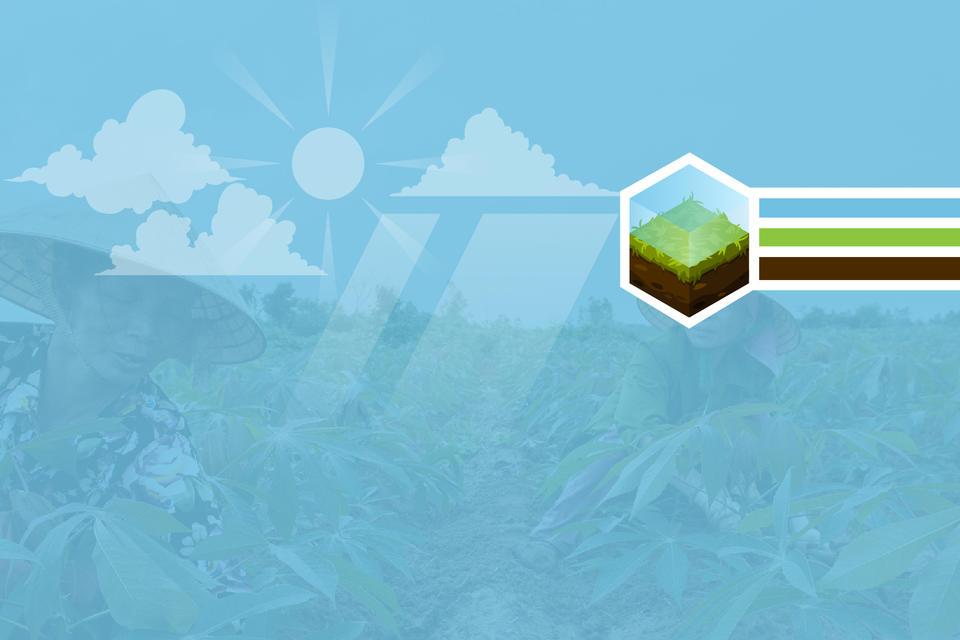2023 Annual report Agrobiodiversity and Tree Diversity for Resilient Communities

Agrobiodiversity is a cornerstone of resilient food systems. From restoring trees and conserving seeds, all the way to accessing new markets and promoting healthy diets, the Alliance’s work on agrobiodiversity aims to ensure that diverse plant genetic resources, crop varieties and complex food production systems bring tangible benefits to communities.

Carlo Fadda
Director, AgrobiodiversityWho benefits?
It is well known that women are often custodians of agrobiodiversity and stand to gain from the uptake of previously overlooked crops. Close to farms, we also focus on the involvement of youth, collaboration with schools, and valorization of indigenous and traditional knowledge. Add the socio-economic and health implications for markets and consumers, and a full range of people can become more resilient with access to agrobiodiversity.
As we anticipate the Convention on Biological Diversity’s COP16 to be held this fall in Cali, Colombia, more countries are interested in meeting biodiversity commitments and taking into account its socioeconomic value, as well as the ecosystem services and climate resilience provided by agrobiodiversity. The examples below, from our work in 2023, underscore these multifaceted benefits.
Resilience on the ground: Growing gardens in Kenya
In Kenya’s arid Turkana County, food shortages and malnutrition are compounded by erratic weather. In 2023, an especially prolonged dry season left many people depending on food aid, while the supply chain was further disrupted by the COVID-19 pandemic and subsequent conflicts. In situations like these, agrobiodiversity is not something just to be conserved: it is a safety net. Our researchers have reached over 11,400 members of the community on nutrition training, which included establishing kitchen gardens so that families can grow their own diverse vegetables. To address this challenge, from 2020 to 2023 Alliance researchers trained 382 beneficiaries in kitchen gardening, and offered nutrition education to 11,401 participants. An evaluation study found that families who grew and sold vegetables spent their profits on buying additional foods such as milk, meat and cereals, thus diversifying their diets and improving both nutrition and incomes.
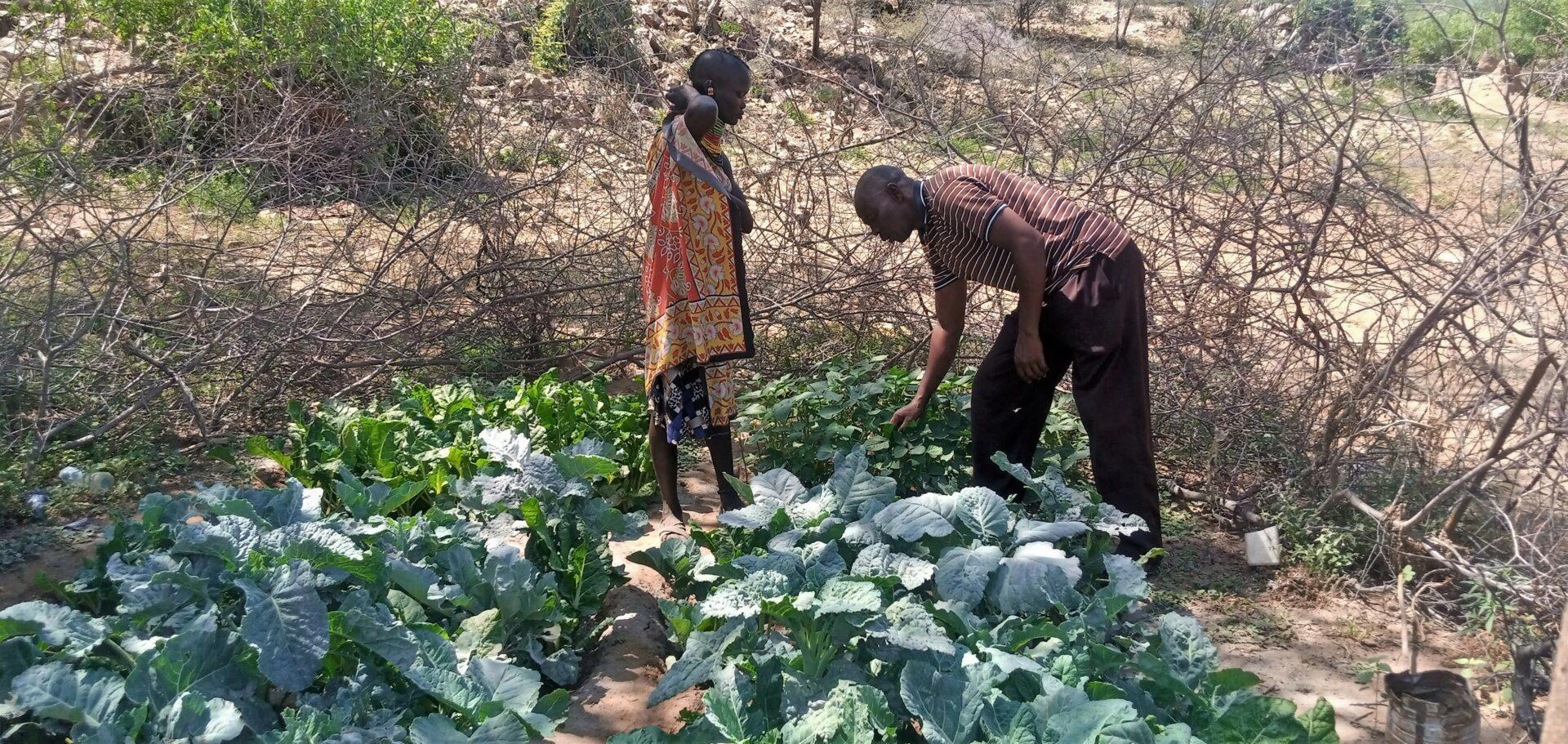
Turkana, Kenya: Reaping Immense Benefits of Vegetables Production story on the CGIAR website.
Diversity Nourishes Communities
Fruit Trees in India
Tree-based foods have significant potential to improve food and nutrition security. In India, the Centre for Fruitful India - a partnership established in 2020 between Bioversity International and the Green Nimboli Fund - has built on decades of fruit-tree expertise to increase low-income families’ access to and consumption of a wide variety of fruits. In 2023, a new phase was confirmed which will promote fruit trees as a nature-positive solution, underpinning government policy, civil society and science initiatives, and primary production by farmers. The Centre for Fruitful India will be a leading research catalyst for the increased production and consumption of underutilized fruit and tree biodiversity.

Prem Mathur
Consultant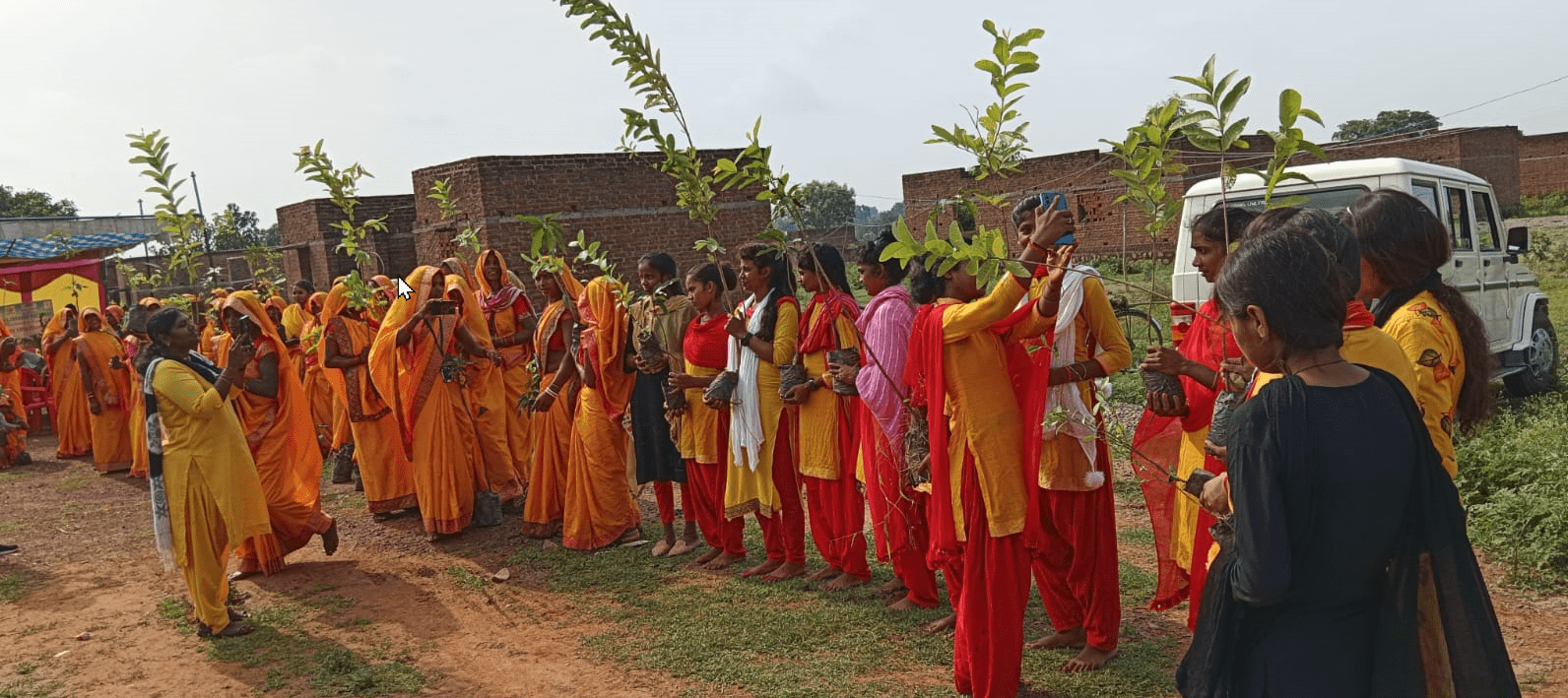
Photo Credit: R. S. Negi, Program Coordinator, Krishi Vigyan Kendra, Majhgawa
Making the Most of Banana Diversity
The evolution of banana varieties in Africa is a great example of fruit biodiversity. Since their arrival from Asia to Africa 2,000 years ago, farmer selection has led to the existence of over 150 varieties today.
With the support of the Belgian Development Cooperation, we have focused on upscaling banana diversity in the drought-prone ‘Cattle Corridor’ that stretches from northern Tanzania through Uganda and southwestern Ethiopia. In Uganda, bananas are now mostly grown in monoculture systems, and knowledge of traditional varieties and cropping methods is disappearing. Readily marketable varieties are promoted to the detriment of traditional varieties that are less suitable for intensification but preferred by communities for their cultural importance, culinary importance, and agronomic benefits.
To ensure the safeguarding and upscaling of these varieties, Alliance researchers have been training young scientists to identify and analyze local banana diversity. Surveys comparing past and present trends in diversity have allowed us to identify farmer-selected and adopted varieties that can mitigate the effects of climate change. The study found that 23 banana varieties were threatened with extinction, while 14 ‘new varieties’ were identified.
The collaboration between the Alliance of Bioversity and CIAT, KU Leuven, and our African partners NARO and TARI have distributed improved banana varieties to increase food security in the African Great Lakes region. The project targets small- and medium-sized farming systems, where farmers produce cooking bananas both for home consumption and for sale. Access to high-quality, climate-resilient and disease-resistant varieties offers an opportunity to reduce poverty in smallholder farming communities in water-scarce regions. Using the diversity of varieties safeguarded in our genebank in Belgium, we designed a citizen science experiment to introduce seven genebank varieties for on-farm evaluation. To date, this experiment has led to the production of over 1,200 banana plants in 56 farms in Tanzania.
Another benefit of growing a diversity of varieties is increased resilience in the face of banana diseases such as Fusarium Wilt - a serious challenge affecting sweeping across many major banana-producing countries.
Tracking our Impact: Banana Genome Hub fosters international research collaboration

Sebastien Carpentier
Principal Scientist, Banana Program LeaderWomen Add Value to Seeds
Community seedbanks build resilience, especially in the face of climate change and associated biodiversity loss. The Alliance has helped establish numerous seedbanks that hold a diversity of resilient crops and neglected and underutilized species such as sorghum, finger millet, cassava, cow peas, pigeon peas, common beans and traditional leafy vegetables gathered from national genebanks and local communities. This diversity is accessible to thousands of farmers, especially women in Africa who are disproportionately affected by the impacts of climate change. The seedbanks provide easy access to a diversity of seeds, improving farmers’ resilience, food security and dietary diversity.
In the last two years, we established a woman’s seedbank serving over 400 women in Kenya’s Kisumu County. The group of women leading this seedbank were especially motivated to increase access to seeds of neglected and underutilized crops, such as traditional leafy vegetables. In Uganda, the new Nyatonzi community seedbank was established in a remote area of Masindi district, offering sorghum and finger millet seeds to local farmers.
In Kenya and in Uganda, we provided additional support for community seedbanks to increase uptake and add value to their products. We supplied three seedbanks with equipment such as seed cleaners, threshers and dryers, and trained over 300 farmers in seed production based on the latest research. We also supplied roller mills to process composite flour with different proportions of the locally sold crops, allowing them to earn income from the proceeds. These value-added products can significantly contribute to farmers’ livelihoods.
Likewise, in India, our participatory Seeds for Needs program supported farmers in selecting a diversity of crops adapted to their local agroecological conditions. We are also collaborating with national governments, universities, civil society organizations, private sector actors and farmers to mainstream traditional varieties. Farmer organizations are marketing seeds of diverse crops under a unique brand, “Dharti Naturals.” By acting as the intermediary between farmers and the market, the organizations increase the uptake of seeds saved on-farm, increasing the availability of these varieties in the national market. Through these initiatives and institutional support mechanisms, seedbanks have become major players in Indian seed markets, earning their own income and becoming more resilient.
Tracking our Impact: 2,630 households benefit from saved seeds

Gloria Otieno
Scientist IINutrition and Beyond
Agrobiodiversity for resilient local food systems
What are the links between agrobiodiversity and diets?
In 2023, Alliance researchers continued to review fruit, vegetable and pulse biodiversity, identifying high-potential species for farmers in Kenya and Ethiopia. In Kenya’s Turkana County, we found that of a sample of 73 wild plant species, 24 had been consumed in the previous six months by 48.5% of households, constituting a major source of nutrients.
We work with farming communities in the Kenyan counties of Vihiga, Busia and Turkana that conserve, document, exchange and bring to market traditional leafy vegetables. In Vihiga, 300 members of a community seedbank reached 8,500 fellow farmers with traditional seeds and capacity building to implement agroecology practices. Of the participating farmers, 80% claimed to have diversified their farms, 75% said that their incomes had increased from diversification, and 75% said that diversification had improved their diets. The positive outcomes seen in Vihiga led the county to form a committee between the national departments of health, agriculture and environment; with the Alliance’s support, the committee developed a roadmap to promote agrobiodiversity across the region to improve diets, incomes and landscapes.
In 2023 we also made progress towards identifying how agrobiodiversity can be promoted in the built food environment (formal and informal markets), because making a diversity of local varieties easily accessible for consumers is essential to bring agrobiodiversity to the center of food systems.

Céline Termote
Senior Scientist - Africa Regional Team leader Food Environment and Consumer BehaviorAnalyzing the nutritional value of our diverse foods
The science of characterizing food components has evolved from considering food as simply a source of energy to understanding the role of essential nutrients for public health. We now understand that as well as the known macro- and micronutrients in the food we eat, there are lesser-known specialized metabolites including sterols, flavonoids, terpenes and several other classes of bioactive molecules that are increasingly recognized for their role in supporting health. We also know that health-damaging compounds such as lead, mercury, pesticides and other synthetic compounds can enter the food we eat due to the pollution of our water and soil, unsustainable agricultural practices and the ways we process food.
In 2023, the Alliance collaborated with the American Heart Association to lead the Periodic Table of Food Initiative (PTFI). The PTFI’s goal is to empower stakeholders to develop data-driven solutions for our most urgent food systems challenges: biodiversity loss, climate change impacts and poor diet quality, which are aggravated by the insufficient intake of diversified foods, leading to undernutrition and diet-related non-communicable diseases.
The PTFI developed standardized analytical methods and created a framework for housing data generated by food researchers that will enable a comprehensive inventory of knowledge of “what is in our food”, creating a repository of knowledge on food biodiversity and the thousands of bioactive molecules present in foods. Working with research partners across the world to generate new knowledge is allowing us to address all forms of malnutrition, improving people’s lives and planetary health.
Bringing Cacao Diversity From Forest to Market
Peru is the point of origin for cacao diversity, with hundreds of varieties offering unique traits and flavors. In 2023, our researchers explored aspects of sustainable cacao production including agroforestry, pollinator health and native varieties.
However, to reach the full potential of this diversity, farmers need access to markets. One challenge for upscaling biodiverse production is meeting the standards for safe levels of cadmium:
In Rome, our Cacao of Excellence Program opened the doors for new cacao research, with its Development Laboratory and Training Centre receiving, analyzing and processing hundreds of cacao varieties into chocolate, leading to its globally renowned Cacao of Excellence Awards. The genetic and flavor diversity of the beans on display at the lab has already benefitted over 100 visiting researchers and trainers-of-trainers from across the cacao sector, empowering national value chain stakeholders in sensory analysis protocols for improved market access. 2023 also saw the launch of the Guide for the Assessment of Cacao Quality and Flavour, containing peer-reviewed protocols that offer precise instructions for the establishment of cacao processing and assessment facilities and the creation of sensory evaluation panels for actors across the cacao value chain.
“The training at the lab is unmatched. For the first time, I was able to witness and work with an incredible amount cacao diversity simultaneously and in one location. In my country, accessing beans from other regions is very challenging, and this helped our team to better understand the beans we grow and their unique flavors.” - Luis Cabrera, UOPROCAE Cacao Cooperative quality specialist
Tracking our Impact: Monitoring cadmium in cacao enables Peruvian cooperative of 3,600 farmers
More about Value chain development
The Agrobiodiversity Index: a Big Win, and What’s Next
The Agrobiodiversity Index - developed by the Alliance in consultation with a range of experts and potential end-users – applies a ‘whole food system’ approach to measure the gap between the plants, animals, and microorganisms that support our food systems, and the agrobiodiversity available to us to strengthen healthy diets and resilient production systems. In 2023, the Curt Bergfors Foundation awarding the Agrobiodiversity Index with the esteemed $2 million Food Planet Prize. The award’s funds have enabled the Alliance to launch a new set of Agrobiodiversity Index activities focused on collecting and integrating evidence from within the CGIAR and globally on agrobiodiversity’s contribution to nutrition, climate adaptation, ecosystem biodiversity, and the integration of poverty-alleviation goals into national policies (e.g. NBSAPs, School Meals Coalition), integrated sustainable food systems modeling efforts (e.g. strengthening agrobiodiversity’s representation in FABLE) and integrated landscape planning initiatives (e.g. Agrobiodiversity Zone management in Peru, multifunctional farm restoration in Madhya Pradesh). The Alliance is sourcing data for this effort through participatory monitoring, artificial intelligence, remote sensing and data synthesis, using data insights to propose and guide concrete actions to boost agrobiodiversity in collaboration with global science-policy networks and farming communities in India and Peru.
Sarah K. Jones
Scientist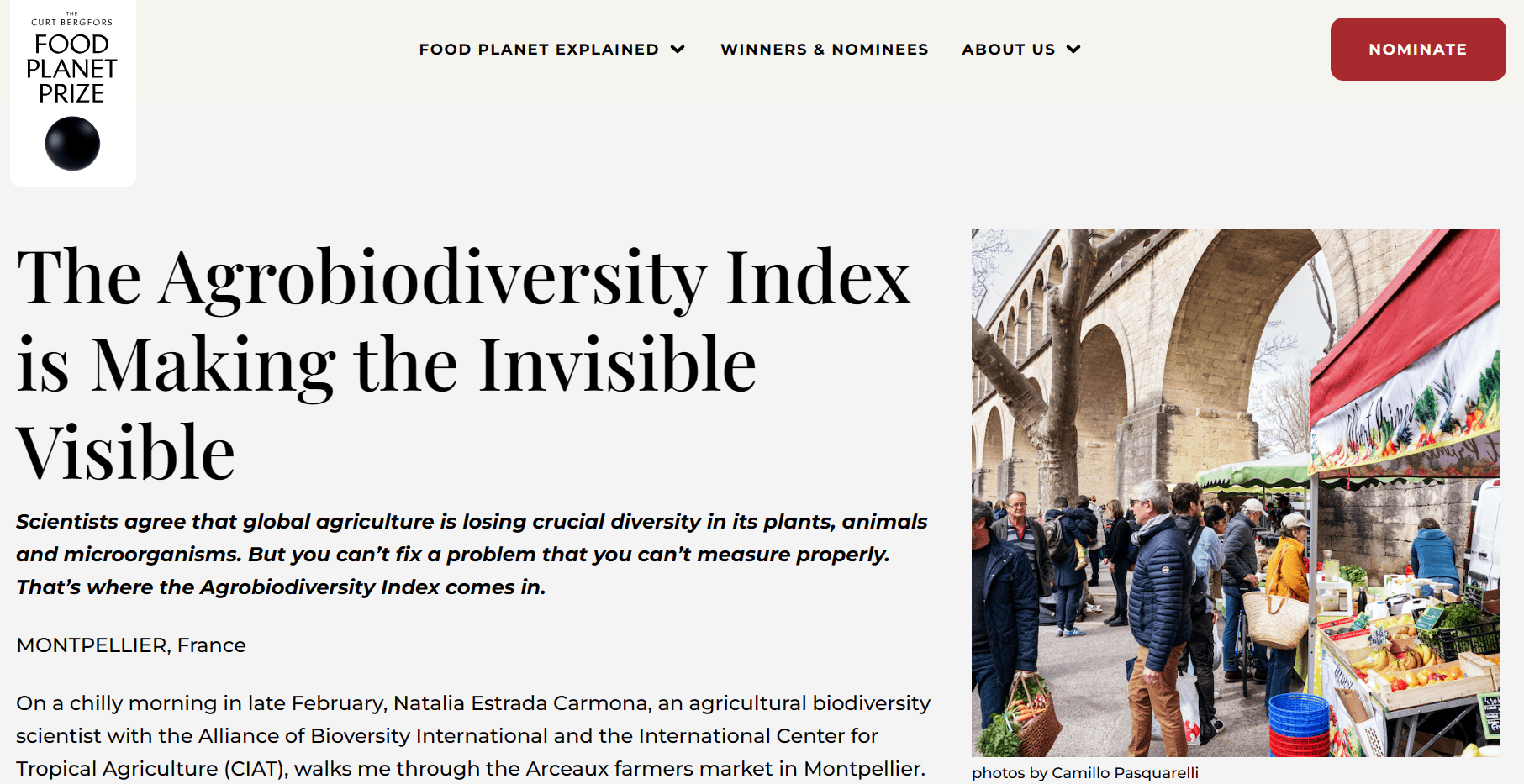
The Agrobiodiversity Index article on The Food Planet Prize website.

